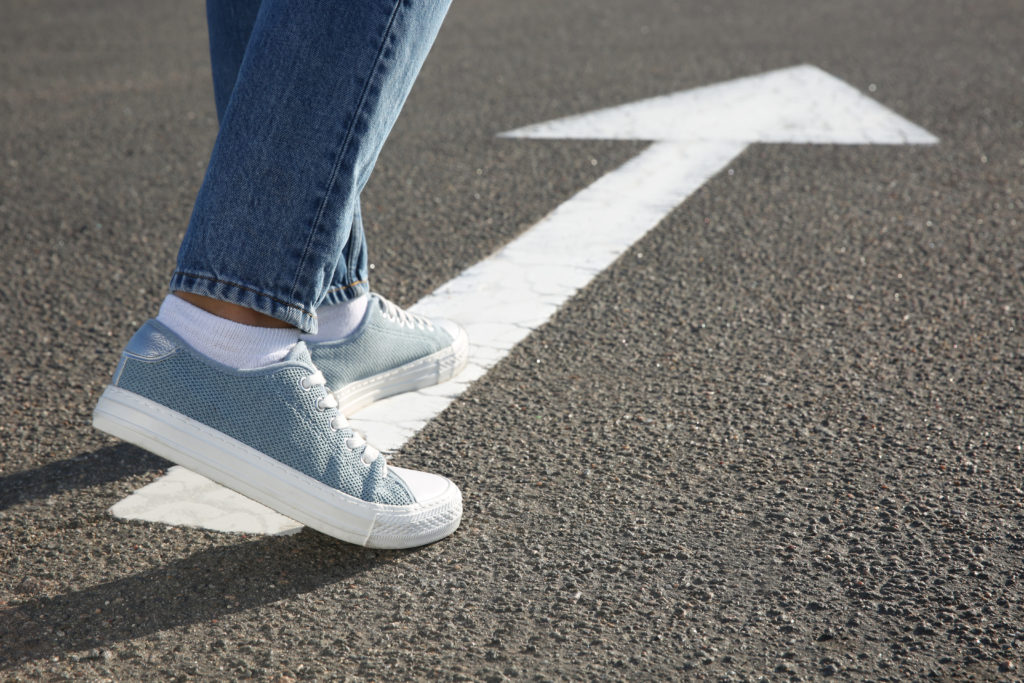Pedestrian Accident Lawyer
When traveling by foot on a roadway of any kind, you are classified as a pedestrian. As a pedestrian accident lawyer from Davis, Johnson & Kallal can explain, in addition to foot travel, those who are traveling on or near roadways using bikes, scooters, skates, skateboards, wheelchairs, or tricycles are commonly considered to be pedestrians.
Pedestrian Safety Tips to Avoid Pedestrian Accidents
Crosswalk signals.
Always evaluate the road for safe crossing with your own senses. Even if the crosswalk says it is safe to cross, rogue drivers and cyclists may fail to stop or yield. Crosswalks are designed to assist pedestrians with crossing roadways. In some cases there will be a button that triggers one or more signals that indicate when it is safe to cross.
Make yourself visible.
As a pedestrian, it is your responsibility to make yourself visible, especially at night. Light colored clothing, lights such as headlamps or your cell phone flashlight, or reflective vests or accessories all help others on the road see you, especially in inclement weather scenarios.
Use sidewalks when possible.
Pedestrians should utilize sidewalks whenever they are available. Many sidewalks have raised curbs that sometimes can prevent wayward cars from making it up onto the walking surface. By walking in the roadway when there is a sidewalk present, pedestrians are unnecessarily putting themselves in a potentially dangerous position.
Yield to vehicles in moments of uncertainty.
Even if a driver of a motor vehicle motions to you, signaling that they are yielding, allowing you to cross, use your best judgment. A signal from a driver to cross does not imply that the road is safe to cross. Always use your sight, and sense of hearing to determine if it is truly safe to cross.
Stop, Look, and Listen.
This one may seem elementary, but never loses relevance as a pedestrian. Pedestrians without hearing or sight impairments should be aware at all times when moving about on foot, regardless of how busy the road conditions are. Sight and sound allows foot traffic to anticipate what is coming, and respond accordingly, helping avoid tragic pedestrian accidents.
Consider every scenario.
Although it may be unpleasant for some, considering and planning what you would do as a pedestrian if a car were to unexpectedly veer towards you. Taking into consideration your abilities and agility, how would you react? In some scenarios you may be able to avoid a car strike by moving to make a barrier between you and the oncoming vehicle hazard.
Plan your route.
Most GPS map applications on smartphones and computers feature a route planning feature that allows you to select pedestrians as your mode of travel. The app will chart a route that helps pedestrians by navigating them around potential hazards, such as, busy roads, highways, and roads without sidewalks. In some cases, especially in cities, the route will include trails and greenways if the route is viable based on your destination.
Be aware and alert.
Even while walking, minimize your distractions. Be aware of when you are approaching a potentially hazardous zone and focus when you do.
Walk facing on-coming traffic.
When traveling on-foot on or near roadways without sidewalks, it is recommended that pedestrians move facing traffic. You can better react to incoming vehicular hazards if you can see them before it is too late!

